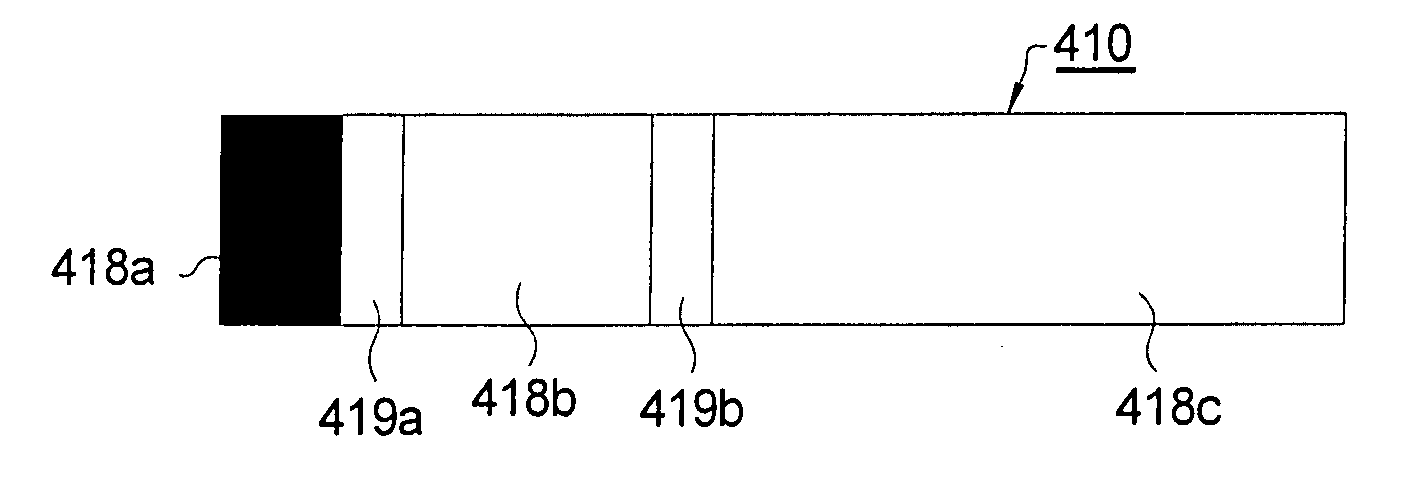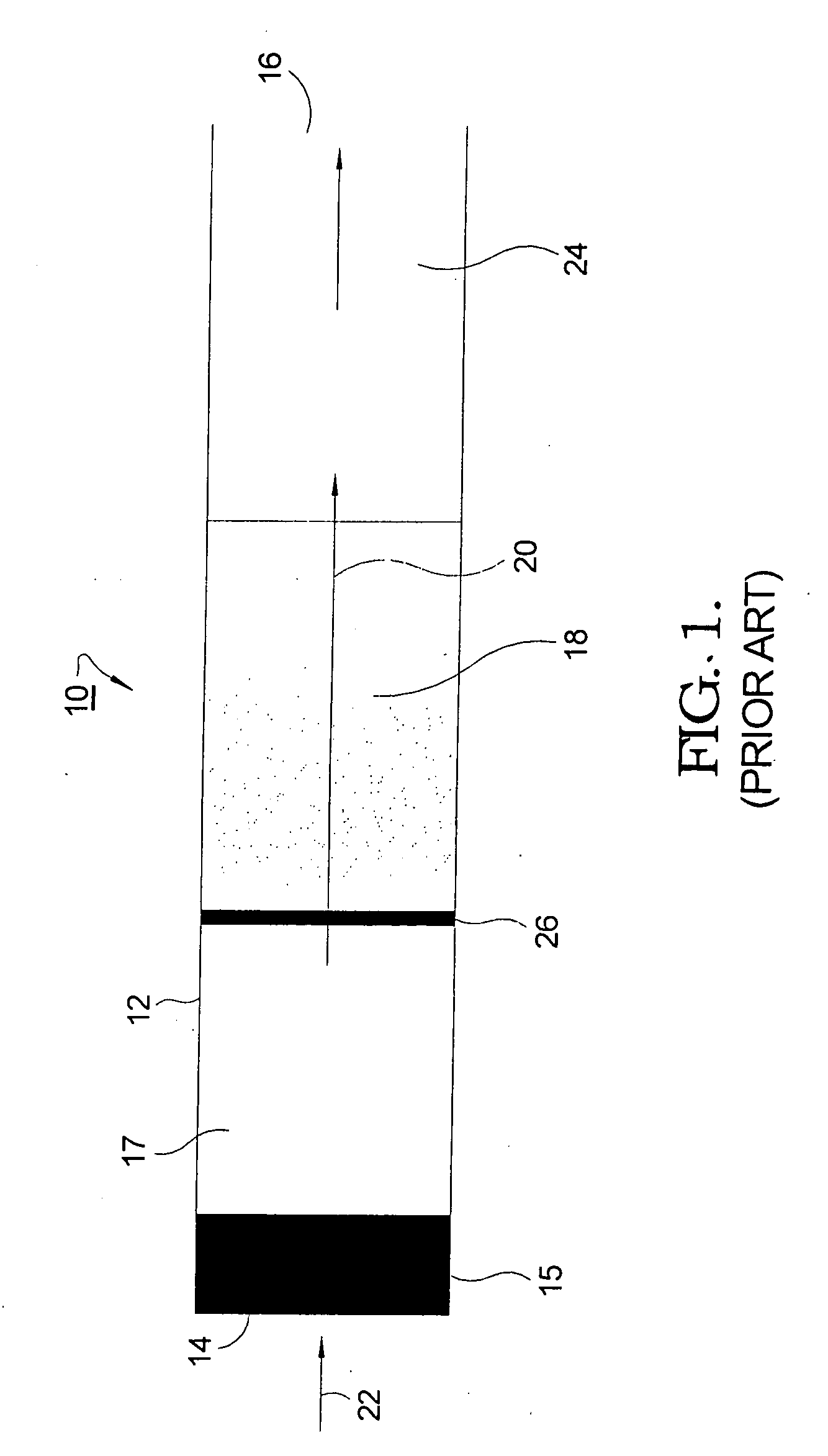Staged hydrocarbon reformer
- Summary
- Abstract
- Description
- Claims
- Application Information
AI Technical Summary
Benefits of technology
Problems solved by technology
Method used
Image
Examples
Embodiment Construction
[0034] The distinctions and benefits of the present invention may be better appreciated by first considering the elements and limitations of a prior art catalytic reformer.
[0035] Referring to FIGS. 1 through 5, a prior art hydrocarbon catalytic reformer 10 includes a housing 12 having an inlet 14 and outlet 16. Disposed within housing 12 is a catalyst bed 18 having porosity in at least a longitudinal direction 20. Bed 18 typically includes a durable non-catalytic substrate coated with a washcoat including or supporting catalytic means. The substrate is formed typically of either a metal or a ceramic, as discussed further below. Conventional means for controlling overall temperature, fuel flow rate, air flow rate, and the like are assumed but not shown in FIG. 1.
[0036] In operation, a mixture 22 of hydrocarbon and oxygen, typically in the form of air, is introduced into reformer 10 through inlet 14 and thence through a mixture preparation unit 15 and fluid mixing zone 17. The mixtu...
PUM
 Login to View More
Login to View More Abstract
Description
Claims
Application Information
 Login to View More
Login to View More - R&D
- Intellectual Property
- Life Sciences
- Materials
- Tech Scout
- Unparalleled Data Quality
- Higher Quality Content
- 60% Fewer Hallucinations
Browse by: Latest US Patents, China's latest patents, Technical Efficacy Thesaurus, Application Domain, Technology Topic, Popular Technical Reports.
© 2025 PatSnap. All rights reserved.Legal|Privacy policy|Modern Slavery Act Transparency Statement|Sitemap|About US| Contact US: help@patsnap.com



